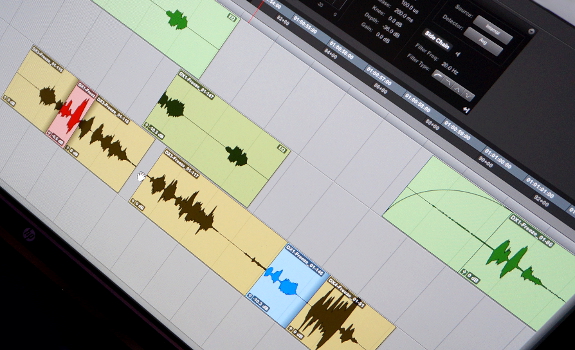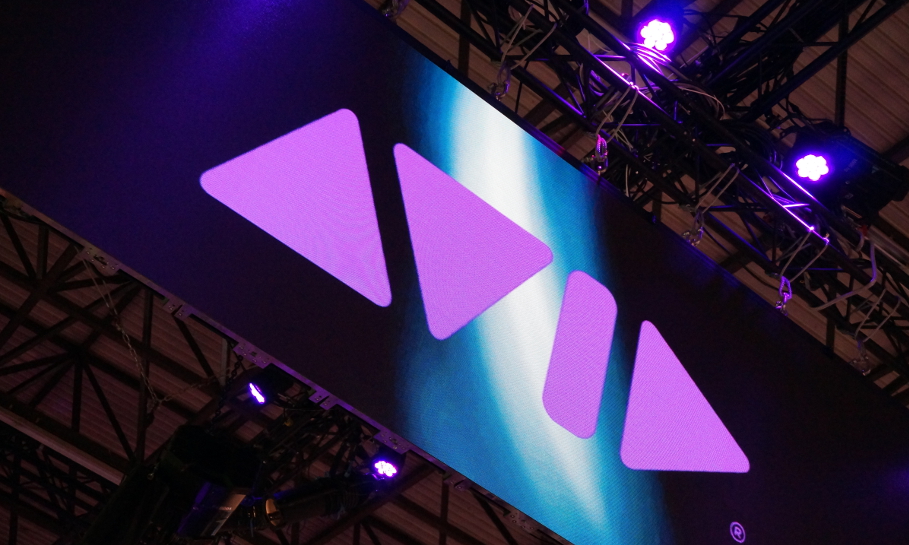The more tools we have for audio production, the greater need there is for workflow management. Avid is making an effort to facilitate collaborative creation.
In a meeting @ IBC, Avid’s Director of Product & Solutions Marketing Tony Cariddi and I spoke about how to integrate several solutions in one workflow within the Avid MediaCentral Platform, which is open to third parties as well. It also allows creative people to work together (from different locations). “The key issues today are in the connectivity.”
“Audio production is decentralised more than ever before”

As production equipment and digital audio workstations are both sophisticated and affordable today, creative producers & musicians can work from their home studio (photo: Thomas Giger)
Making tools work together
Avid’s Connectivity Toolkit is allowing third parties to participate in the Avid MediaCentral Platform. The company’s own products are part of either the Artist Suite (which includes Pro Tools), Media Suite, or Storage Suite. But there’s so much more out there: “There’s a multitude of products solving individual problems, and there’s also ton of plugins for more specific things. The challenge today is not finding a better solution; it’s connecting those solutions together”, Cariddi says about Avid’s motivation for the open platform. He estimates that individuals and companies used to spend “30 percent” extra, just on integrating several different solutions. “The real emphasis is to situate those products on top of a platform, so that all media can travel across, for example, Pro Tools, Venue, Media Composer and Media Asset Management in a fluid way”.
 Contributing to group assignments
Contributing to group assignments
Combining software resources is just half of it; combining human effort is the other. Individuals can now share projects and work together in the cloud, “almost like they’re in the same room”, but they may also “share changes in the mix; share changes in the plugins; share changes in the recording.”
Implementing social media elements
So it’s all about collaborating and sharing in this social age?
“Yes, absolutely. One of the things we’re seeing is that audio production, or any media creation, is decentralised more than ever before. There’s been this really strong trend towards the independent studio, with everybody having their own tools, and these tools becoming much more affordable and powerful. You can do quite a bit of work on a mobile device. Decentralising even more is going to exacerbate the challenge of trying to connect with each other. We get together at places like IBC, NAB and other trade shows, but we’ve got less and less of a community.” For this reason, Avid is adding social elements (along the lines of Facebook, LinkedIn and online forums) to its production tools. “People are required to connect now more than ever.”
“The key issues today are not the products themselves”

A great choice from well developed and constantly updated production tools does create one challenge – making all of these different solutions work together smoothly (photo: Thomas Giger)
Monetising self-made & collective content
Looking at the development of Pro Tools, are you working on exciting innovations there as well?
“We think the Pro Tools cloud collaboration is exciting innovation. We’re working with PXF archive, which is the ability to store your projects for posterity with options to freeze tracks. The Avid Marketplace builds in the monetisation platform. Anyone creating media can post it to the Marketplace to monetise it, ensuring all of the proper tagging. Whether something was done by 1 person or by 50 different people, all of their contributions are tagged and can be found.”
 Developing product updates simultaneously
Developing product updates simultaneously
Does your focus on connectivity have any effect on product development?
“It’s key that we keep all flagship products ‘best in class’. They’re continuing to evolve. It is a huge effort to both keep these products at the forefront, and build out the platform framework.”
Connecting creative people together
Cariddi thinks that “there’s been a ton of innovation” between Pro Tools 10, 11 and 12, and mentions additions such as Track Freeze as well as Dolby Atmos compatibility. The film & video editor Media Composer now offers 4K playback and editing, and a “resolution-independent” DNxHR codec. “But we clearly have identified the fact that the key issues today are not the products themselves. As a radio producer, you can probably do a fair amount of work with a mobile device and a portable mic plugged into your phone. We don’t have to solve that problem anymore, but it will be important to take advantage of evolving workflows. The key issues today are in the connectivity, and in how to monetise and sustain the lifestyle and career of being a media professional.”






Add Your Comment